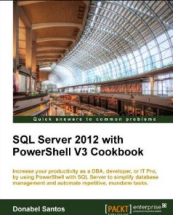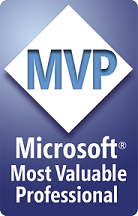I just want to give a BIG SHOUT OUT to everyone who organized, presented, participated and attended VANSPUG‘s SharePoint Saturday in Vancouver (#SPSVAN). This is honestly one of the most organized, professional community I’ve attended in the last little while. All the sessions I attended were excellent, and yes – you do get that warm touchy-feely feeling after the event that kind of feels like you attended some kind of reunion (saw and talked to @jasonklatt too – we went to BCIT CST in the same batch! Although we were not in the same set, we were in the same labs).
Thank you to our presenters, including Todd Klindt (@toddklindt), Sean McDonough (@spmcdonough), Cathy Dew (@catpaint1) and Yaroslav Pentsarskyy (@spentsarsky)  who devoted time and energy in coming to Vancouver, and presenting excellent materials to the inquisitive Vancouver techie community.
who devoted time and energy in coming to Vancouver, and presenting excellent materials to the inquisitive Vancouver techie community.
I know it’s been a lot of work for everyone who made this happen, especially the event chairs Sherman Woo (@SPSherm) and Michal Pisarek (@MichalPisarek). But I can’t say enough that it’s been a GREAT event. They gave out lots of cool prizes:
– Telerik Ultimate Suite Licenses
– Critical Path Training voucher
– Amazon Kindles
– Dell LCD Monitors
– Microsoft keyboard/mouse
– Bamboo Store Certificate
– KWizcom Store Certificates
– Awesome SharePoint books – including Todd Klindt’s Wrox SharePoint Administration 2010 book, Sean McDonough’s SharePoint 2010 Disaster Recovery book, and Yaroslav Pentsarskyy’s (@spentsarsky) Top 60 Custom Solutions built on Microsoft SharePoint Server 2010 . … (yes, yes, all awesome books but Lady Luck was not with me today so I didn’t win any …)
Generous sponsors include AvePoint, Habanero Consulting Group, K2, Quest Software, WPCG, Colligo Networks, Idera – and in our own little way – Black Ninja Software. Shereen (blog | twitter) and I would have wanted to present as well, but sometimes 24 hours is just not enough in a day 
As someone who is part of the community – thank you again – for making this happen. And I just want to reiterate – this is an excellent community event – to share knowledge and experiences – and I look forward to more in the future. I look forward to being more active myself in the future.
And if you happen to be reading my blog, let’s continue supporting VANSPUG. It’s a great community initiative.
—
Here’s just a few points worth noting in the sessions I attended:
Upgrading SharePoint 2007 to SharePoint 2010 by Todd Klindt
– Never have your only resume on SharePoint 
– When upgrading, key type should be the same. Ie, Trial 2007 to Trial 2010, or Enterprise 2007 to Enterprise 2010
– Some goofiness even after visual upgrade, for example, broken breadcrumbs
– MySite upgrade is a whole different story. The MySite site collection is upgraded – but the MySite Host is not. Also, links in mysites do get lost ..
– (eherm) .. DBAs are sometimes not gracious hosts, so you need to plan when your DB detach/attach is going to happen.
– DB attach with AAM redirect – option for Terabyte databases/big sites and site collections
– PowerShell, baby! — when you’re upgrading multiple sites.
Saving SharePoint by Sean McDonough
– RPO (Recovery Point Objective), RTO (Recovery Time Objective), RLO (Recovery Level Objective)
– At the end of the day, the questions to ask are what does your business need to be back in the event of the disaster? What is the money you stand to lose if your system is down x amount of hours?
– Content is king. Protect your king.
– When applying Service Packs, patches and hotfixes, do a Central Admin backup before and after the patch.
– Your site collections can be big – terabytes big – SharePoint can handle that, but backup becomes the boundary. You just need to plan your backup and recovery. How long will it take for you to backup the whole thing?
– For big site collections, worth looking at Remote Blob Storage solutions.
– Be careful with VM snapshots and cloning. Always test, test, test. Consistency is key.
– SharePoint 2010 is mirroring aware.
– There is a PowerShell script that can help you document your SharePoint sites. It runs for a long time, but it’s worth it. Here’s the link (http://technet.microsoft.com/en-us/library/ff645391.aspx).
– Have confidence in your solution. And confidence is gained through testing.
– If you need to back up on the cloud, check RackSpace.
Making PowerShell Less Scary for the SharePoint Administrator by Todd Klindt
(I love PowerShell. It rocketh. To the nth degree. (Ok, ok, I know I sound very geeky. I’ll stop))
– Task driven learning is an effective way to learn PowerShell. Have a task at hand. See how that can be done in PowerShell.
– Your friends are Get-Help, Get-Command, Get-Member
– When doing EnumWebs, and you want to see all, use -LIMIT ALL
– Make sure you dispose any SP objects properly, use Start-SPAssignment -Global, then your code, then Stop-SPAssignment
– Few tasks you can do with SP and Powershell:
– Activate features across site collections
– Provisioning of Managed Accounts
– Create new sites
– Backup all site Collections




